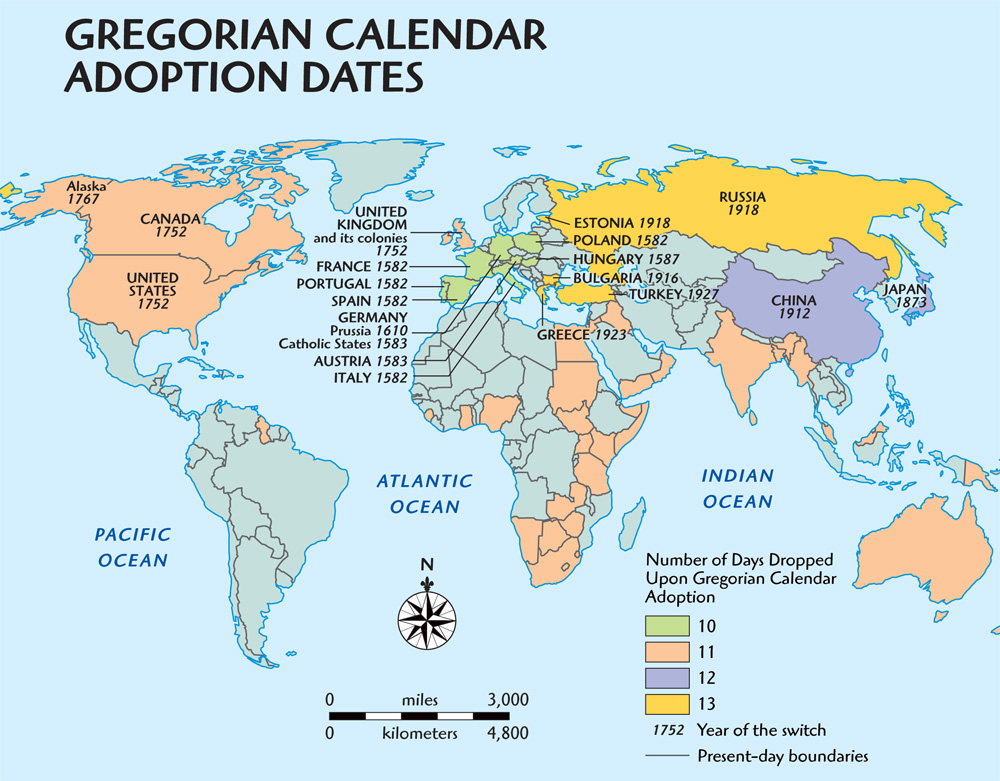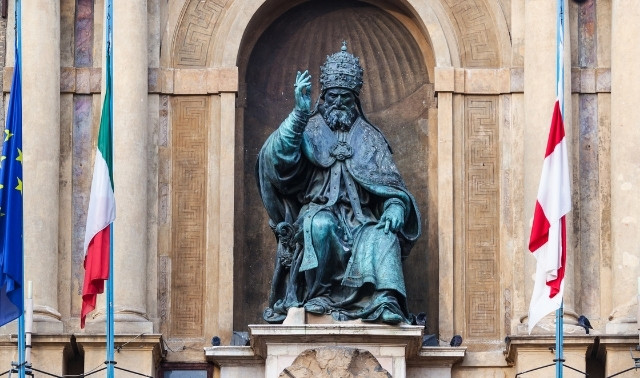Sign up for the Family Tree Newsletter Plus, you’ll receive our 10 Essential Genealogy Research Forms PDF as a special thank you!
Get Your Free Genealogy Forms
"*" indicates required fields
Have you ever looked at a record and seen the letters O.S. or N.S.? You can thank (of all things) calendar systems for the strange nomenclature. During the Renaissance of the 16th century, the Catholic Church switched from the Julian calendar to the Gregorian calendar. As a result, predominantly Catholic countries such as Spain, France, Italy, Poland and Portugal skipped 10 days ahead. The rest of the world stayed behind.
The Julian calendar, introduced by Julius Caesar, was imprecise, making it difficult for the Church to determine when to celebrate the Easter holiday. This presented problems for the clergy, astronomers and long-term recordkeepers. As a result, Pope Gregory XIII introduced a new, more precise timekeeping system. Under the “Gregorian calendar,” every fourth year is a leap year, allowing the calendar to more closely follow the Earth’s revolution around the sun.
Adopting the new calendar presented some difficulties, however. To “catch up,” countries adopting the calendar had to skip ahead several days. Citizens of these Catholic countries that switched to the new calendar fell asleep Oct. 4, 1582, and woke up the next day on Oct. 15, 1582, having lost 10 days from the calendar year.
But it would take nearly four centuries for the rest of the world to adopt the Gregorian calendar. And such inconsistencies throughout the Western world can be a headache for genealogy researchers. For example, Dec. 25, 1725, in the United Kingdom and the same date in Austria (a predominantly Catholic country) were, in reality, two different days. If you’re looking at contemporary records from two different countries, you’ll have to keep this difference in mind.

The map above illustrates the year each country adopted the Gregorian calendar, and the number of days dropped upon adoption—two important facts for your research. As you can see, centuries passed before the rest of the non-Catholic world made the shift. Countries within the United Kingdom (including what would become the United States, Canada, Australia, India and British Africa) switched over in 1752. These countries skipped from Sep. 2, 1752, to Sep. 14, 1752, omitting 11 days.
In addition, the Gregorian calendar established January 1 as the beginning of the legal year. Previously, these countries recognized March 25 as the first of the year. This leads to some confusion in modern times as researchers try to sort out in which year an event occurred. Events that took place before 1752 in UK-held territories might have had their dates retroactively changed to fit with the new Gregorian calendar. For example, George Washington’s birth was recorded as Feb. 11, 1731, under the Julian calendar. But because the Gregorian calendar starts on January 1, we now recognize Washington’s birthday as Feb. 22, 1732.
To help clear this up, some dates from this time period are indicated as either O.S. (Old Style, referring to the Julian calendar) or N.S. (New Style, referring to the Gregorian calendar). Under this system, George Washington’s birthday is Feb. 11, 1731 (O.S.) or Feb. 22, 1732 (N.S.).
Note that Russia, China, Greece, Turkey and Estonia didn’t move to the Gregorian calendar until much later—the early twentieth century. As a result, these countries had to skip even more days to catch up with the “new” calendar.
Luckily for genealogists, it’s easy to convert both Julian and Gregorian dates in “one step”, thanks to Stephen Morse’s One Step Webpages.
A version of this article appeared in the October/November 2014 issue Family Tree Magazine.
Related Reads
ADVERTISEMENT







